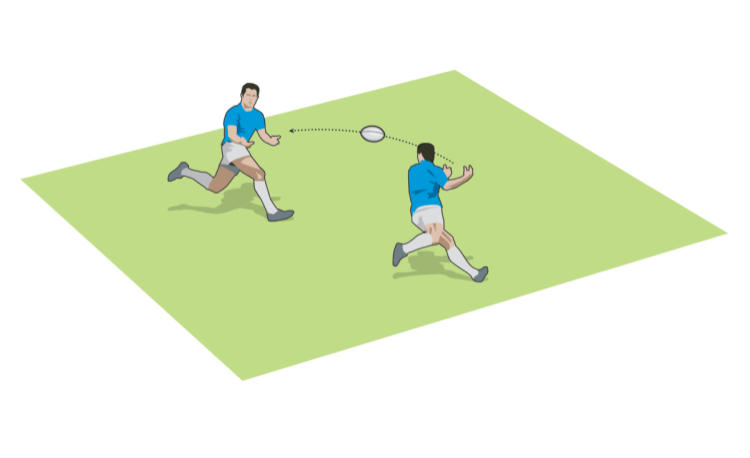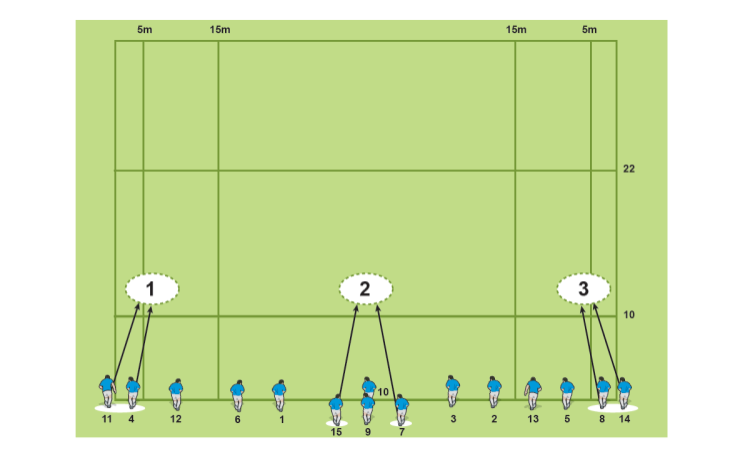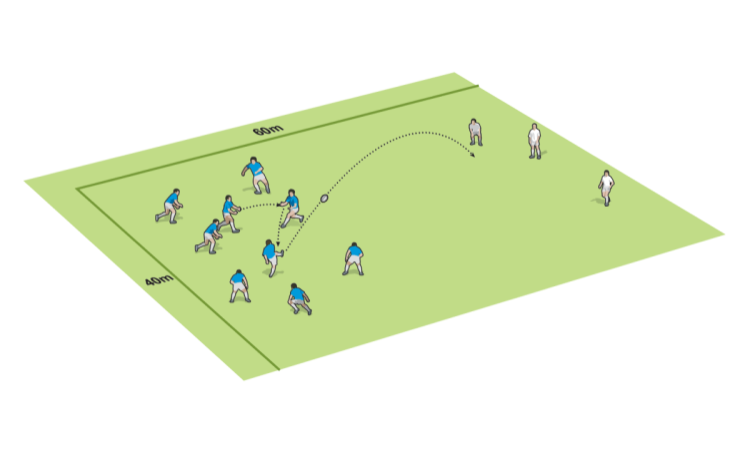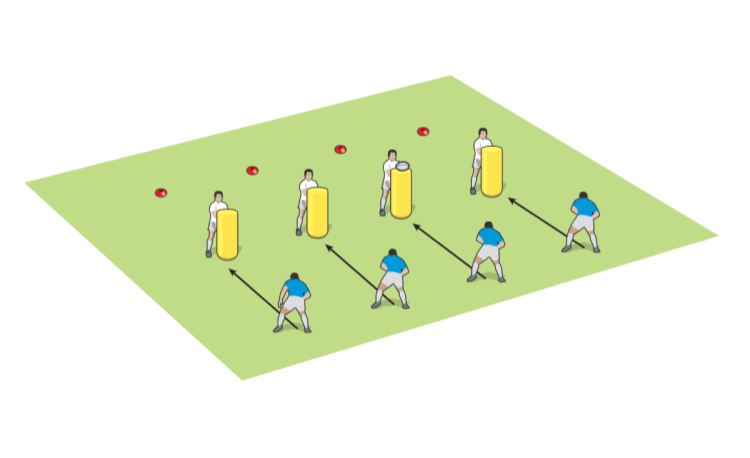You are viewing
1 of your 2 free articles
Move it, keep it
Passing and Handlingby Rob Appleyard
Develop your players' ability to control the ball on their body before contact by making sure they have at least two, if not four, points of contact on the ball. By moving the ball from hand to hand quickly, players are able to keep it free and away from the opposition. With a good grip, from hand, to forearm to bicep to chest, they can take contact and release the ball quickly (either for a placement or a pass – even a “catflap” pass).

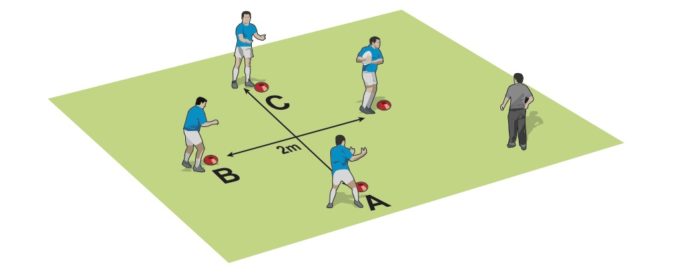
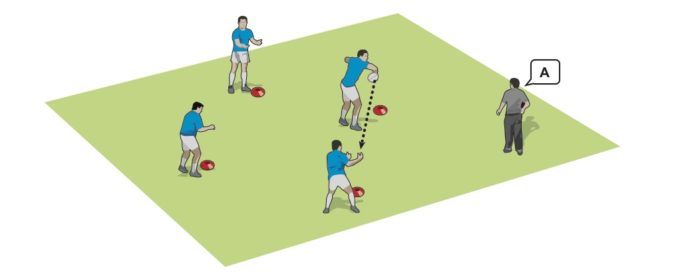

- First, as a warm up, a player puts the ball into four points of contact on his left side.
- He then shifts it across to the four points of contact on the right side.
- He repeats 10 times, then swaps with his partner who does his sets of 10.
- The ball is returned to the first player who jogs forward, while his partner tries to knock the ball down.

- Develop by putting a ball carrier with a receiver either side of him and one behind 2m away.
- These players are labelled A, B and C.

- He moves the ball between each side and when you shout out a letter, he passes with one hand to that player.
- They swap places and continue.
TECHNIQUE
- Four points of contact: Hand, forearm, bicep and chest.
- Don’t pass like a waiter holding a tray – pass with the ball on two points of contact.
Newsletter Sign Up
Coaches Testimonials

Gerald Kearney, Downtown Las Vegas Soccer Club

Paul Butler, Florida, USA

Rick Shields, Springboro, USA

Tony Green, Pierrefonds Titans, Quebec, Canada
Subscribe Today
Be a more effective, more successful rugby coach
In a recent survey 89% of subscribers said Rugby Coach Weekly makes them more confident, 91% said Rugby Coach Weekly makes them a more effective coach and 93% said Rugby Coach Weekly makes them more inspired.
Get Weekly Inspiration
All the latest techniques and approaches
Rugby Coach Weekly offers proven and easy to use rugby drills, coaching sessions, practice plans, small-sided games, warm-ups, training tips and advice.
We've been at the cutting edge of rugby coaching since we launched in 2005, creating resources for the grassroots youth coach, following best practice from around the world and insights from the professional game.
More from us
© 2023 Rugby Coach Weekly
Part of Green Star Media Ltd. Company number: 3008779
We use cookies so we can provide you with the best online experience. By continuing to browse this site you are agreeing to our use of cookies. Click on the banner to find out more.




